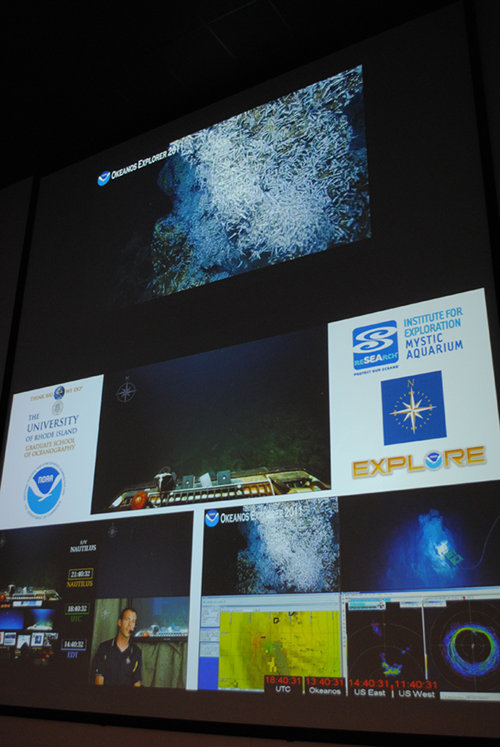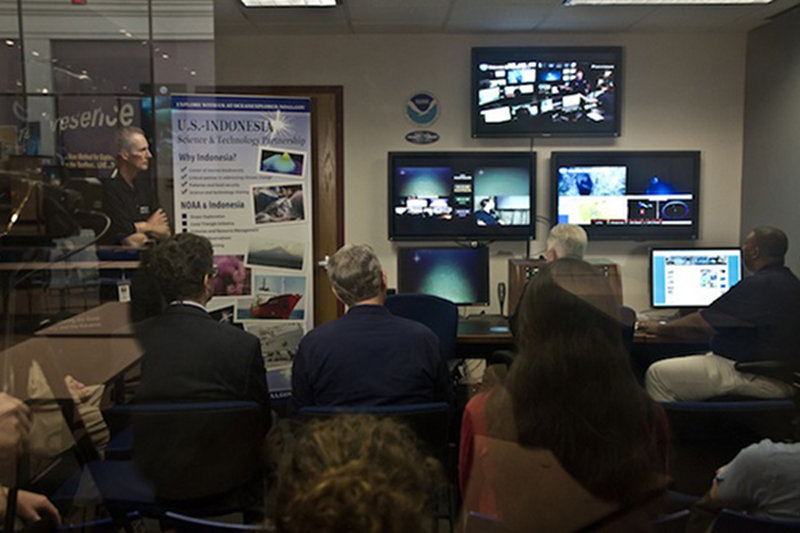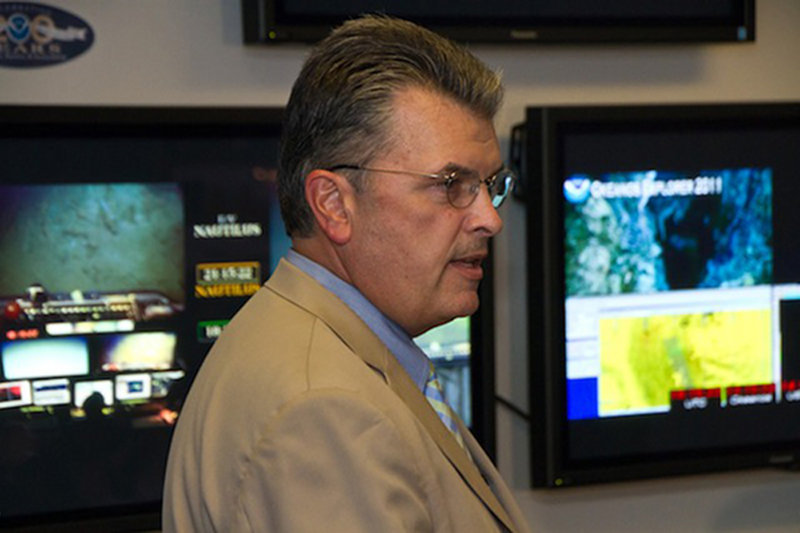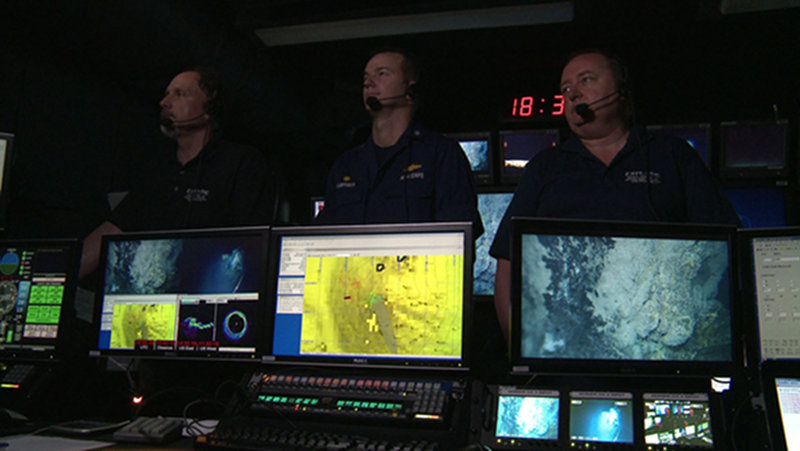
By Keeley Belva, Communication Coordinator - NOAA Office of Ocean Exploration & Research
and Chris German, Science Team Lead/Senior Scientist - Woods Hole Oceanographic Institution
August 9, 2011

Live feeds being screened at the Inner Space Center, University of Rhode Island. Image courtesy of NOAA Okeanos Explorer Program, MCR Expedition 2011. Download larger version (jpg, 4.4 MB).
Today began with the discovery of some new biological communities that included both shrimp and hydrothermal tubeworms hosted at diffuse vents—the latter is likely the first seen in the Atlantic. We also found new chimney structures in an area known as Von Damm that were emitting hot clear fluid in a focused manner around the edges as well as toward the center of the site.
By lunch it was time to focus on an outreach event connecting the Okeanos Explorer with audiences at our Exploration Command Center in Silver Spring, Md. (near Washington, D.C.) and the Inner Space Center at the University of Rhode Island, as well as with scientists aboard E/V Nautilus looking for ancient shipwrecks in the Black Sea.

Audience members and event facilitators at the Silver Spring, Md., Exploration Command Center (ECC). Image courtesy of NOAA Okeanos Explorer Program, MCR Expedition 2011. Download image (jpg, 80 KB).

Craig McLean, Acting Assistant Administrator of NOAA's Office of Oceanic and Atmospheric Research, participates in the Silver Spring ECC event. Image courtesy of NOAA Okeanos Explorer Program, MCR Expedition 2011. Download image (jpg, 78 KB).
Outreach is an important part of our exploration and research expeditions. Part of this is seen on the website you’re reading now, and sometimes it’s through events like today, where we invite news media to come see what’s happening. It helps inform audiences that are broader than the science community—like you!
During the event shore-side participants watched live video from Okeanos Explorer of an active hydrothermal vent habitat about 2,300 meters (almost a mile and a half!) deep swarming with shrimp at the Mid-Cayman Rise. People also had the opportunity to hear about the operations of both ships, and ask questions about the ongoing explorations.

Our hosts on the Okeanos Explorer: (from left) ROV Team Lead Dave Lovalvo, Commanding Officer Robert Kamphaus, and Science Team Lead Chris German talking about our operations at the Mid-Cayman Rise. Image courtesy of NOAA Okeanos Explorer Program, MCR Expedition 2011. Download larger version (jpg, 438 KB).

NOAA Ship Okeanos Explorer at the Mid-Cayman Rise was connected with E/V Nautilus in the Black Sea and an audience in the Exploration Command Center in Silver Spring, Md., and to scientists and reporters at the University of Rhode Island. A first-time technical feat! Image courtesy of Google Maps & NOAA Okeanos Explorer Program, MCR Expedition 2011. Download image (jpg, 115 KB).
After the event, it was back to work exploring new parts of the seafloor. We decided to test a new approach—following sonar targets identified during a previous survey and generously shared with us by shipboard scientist Paul Tyler and his U.K. colleagues from the National Oceanography Centre, Southampton. On all three targets visited, we found rocks outcropping, fluid flow out of the seafloor, and extensive deep sea coral communities, as well as other fauna.
All in all it was a very successful day on all fronts.